(00:02)
Welcome to Together, We Heal, a new podcast brought to you by SCP Health. As one of the largest healthcare partners in the country, we work to bring hospitals and healers together in pursuit of clinical effectiveness. Our programs span the entire continuum of care, including emergency medicine, hospital medicine, wellness, telemedicine, intensive care, and ambulatory care. On Together, We Heal, we will share expertise from our clinical and business leaders on how to create healthier communities, both within and outside the four walls of the hospital.
(00:38)
We are pleased to launch our new podcast Together, We Heal, with one of the most pressing topics in healthcare, surviving disaster fatigue and building a culture of resilience. Healthcare providers put their lives on the line every single day to battle major disasters. And 2020 was a year filled with disasters on all fronts, devastating hurricanes, rampant fires, and of course, the continuing global pandemic. Hospital clinicians and leaders play a key role in each of these situations.
(01:13)
To help you better support them through both the fatigue and recovery, today we will discuss five phases that those impacted by disaster commonly experience. We will also explore signs of disaster fatigue and talk about ways you can help clinicians build resilience, endure intense challenges, and support them through recovery. So what is disaster fatigue? In the hospital environment, disaster can be defined as an event or multiple events occurring at one time that overwhelm your facility’s usual capabilities and capacities.
(01:44)
Examples just from 2020 alone include record-breaking hurricanes, rampant fires, and of course, the COVID-19 pandemic. Clinicians already have to manage the stress that their day-to-day duties put on their bodies, minds, and emotions. They’ve also had the added strain of dealing with these massive disasters. As we await the time when more Americans are protected from COVID-19 by vaccination or herd immunity, our frontline providers have yet to take a break. It is enough to tip any clinician’s health in a risky direction.
(02:17)
Disaster fatigue and recovery has been studied with phases defined for the experiences generally shared by those affected. The five phases of disaster include: one, threat, two, rescue, three, honeymoon, four, disillusionment, and five, recovery. Let’s begin with the threat phase. Fortunately, some disasters like hurricanes come with warning. However, often we hear warnings of events that ultimately don’t come to pass. As a result, it can be difficult to discern when to be concerned and prepare or when to brush it off and keep moving.
(02:55)
In the case of the COVID-19 crisis, warning signs of a pandemic were around for years. Conferences were held. Papers were published and predictions were publicized, but there was no widespread urgency around preparing or preventing a pandemic. As a result, the COVID-19 threat has been complex. It has been pervasive across nations, difficult to manage, and riddled with conspiracies. Next come the rescue and honeymoon phases. Often disasters follow a typical publicized storyline. An event occurs, people heroically respond, and then goodwill abounds.
(03:31)
However, there are also many people who become overwhelmed in the face of chaos and still others who attempt to profit unscrupulously from the situation. In general, the best of humanity rises above during the rescue phase, which is when there is an outpouring promise of assistance, and honeymoon phase, which is when you think you might be in the clear and things have calmed down. We saw this at the start of the COVID pandemic. Large groups rallied to cheer on healthcare workers leaving and entering the hospital at shift change.
(04:01)
Organizations held virtual service events. Corporations showed compassion for their suffering employees. Local businesses donated meals to frontline workers. There was a bonding amid the burden, a connection amid the chaos. But as time went on, these outpourings of support waned and divisiveness grew. Enter the disillusionment phase. The disillusionment phase occurs when discouragement develops, as the reality of the scope and magnitude of the disaster become apparent.
(04:31)
In the COVID-19 pandemic, there were many hopes in 2020 that it would all be over by Easter, by summertime, or by the new school year. However, as the return to normalcy dragged on, frustration increased and empathy decreased. People started to express being “over this pandemic” and adherence to health and safety recommendations declined. This disillusionment phase is taking a toll on healthcare workers more than most people. While others are trying to return to normal life, clinicians are still deeply immersed in the battle against this rampant disease.
(05:06)
The pleas of healthcare workers to mask up or stay home have started to lose meaning or be ignored, which only enhances their feelings of isolation, abandonment, and sadness. In many ways, this is the phase we are still in. Though various testing, treatment, and vaccination innovations have brought some sense of hope, we are certainly not out of the woods yet. The final phase of disaster is the one we are all longing for, recovery.
(05:34)
This period typically includes rebuilding, reconstruction, and reconsideration of priorities, both personal and communal, given the fragmentation of our healthcare system, the various perspectives held by local, state, and federal governments. In the unique makeup of each community, the approach to recovery will likely look different across regions. So as we eagerly wait on the recovery phase to come, what can we do to help our clinicians and staff get through disaster fatigue, build resilience, and rediscover joy?
(06:07)
We have a few tips to share. First, recognize that we may all be processing emotions in a different way, and that’s okay. You should ensure that your clinicians and staff are able to share what they are experiencing and how they are coping. If helpful, our outline of disaster phases can serve as a jumping off point for this conversation, especially with those who may have never personally experienced a crisis before.
(06:31)
To build resilience in this time and in the future, encourage those of all specialties and positions to express how they feel so they can realize that they are not the only ones in during this pressure and weight. The lesson here is to help people understand that there are resources available and that they are not going through this alone. Secondly, prepare your team for both the trial and the triumph.
(06:55)
Preparing your leadership and workforce in advance can give a sense of confidence that you and your team can respond quickly and skillfully to any calamity and recover in its wake. For example, you can incorporate regular disaster planning drills, proactively offer options to build up physical and emotional well-being, and enhance overall flexibility and teamwork. A culture of support, coupled with recognition and sincere appreciation can lead to a resilience that carries your organization through even the most tumultuous storms.
(07:27)
Next, it’s important to take care of ourselves so we can take care of other things. In order to build a true resilience and recovery with strength, make sure that you are practicing what you preach to your staff and clinicians. Know thyself. Be honest with yourself. Identify what you can do for yourself. This is some of the oldest wisdom available. No one is immune to the emotional toll a disaster can take, particularly when events occur in rapid succession.
(07:55)
If you give yourself some grace and not walk around feeling guilt-ridden, you will show others that it is okay to do the same. Remember to address your physical, emotional, mental, and spiritual states, just as you’re asking your workforce to do. Finally, identify problems that can be fixed. Figure out what you can do to help improve the situation you and your community are in by primarily focusing on things you can actually change or influence. It is important to involve your employees and clinicians in these change-making conversations.
(08:28)
This will improve representation of various interests and secure buy-in for new initiatives. If the pandemic demonstrated a lack of data regarding the needs and concerns of various populations in your area, put a plan in place to rectify this issue and heighten patient engagement. If fires stranded your communities and unknown areas and highlighted the importance of virtual visit options, optimize those functionalities to be ready for future disasters.
(08:55)
If hurricanes exhausted your workforce and your bottom line, consider working with a new partner to find operational and financial efficiencies that benefit your organization holistically. In conclusion, if left unrecognized or unmanaged, the stress of the events of 2020 and the months to come will likely carry negative consequences both in the short and long-term for your hospital, clinicians, and staff.
(09:19)
To combat this, ensure that you and your leaders are well-versed in the various phases of disasters, that you are on the lookout for warning signs of low mental health, and that you are constantly working to make healthcare a more supportive, compassionate field in which to work. This wraps up our discussion of how to address disaster fatigue and create a culture of resilience. While COVID-19 has brought an immense amount of pain and suffering, it has also had a few notable positive effects.
(09:47)
It has brought people together over their commonly shared fears, needs, and goals, and showcased how incredibly the hospital community relationship can work when they are caring for each other deeply. Together, we will heal, even from this. Join us in two weeks when we explore whole patient populations and how to build long-term loyalty in spite of the pandemic. We’ll look at tactics for developing better relationships with key community groups like major employers and discuss ways to integrate social determinants of health data into your strategies.
(10:26)
In the meantime, get to know us and find out what we can accomplish together by visiting our website, scp-health.com. Here you can learn how we’ve helped hospitals like yours take action to streamline hospital operations, implement cost and revenue solutions, achieve clinical quality goals, and more. Again, that’s scp-health.com. See you next time.






